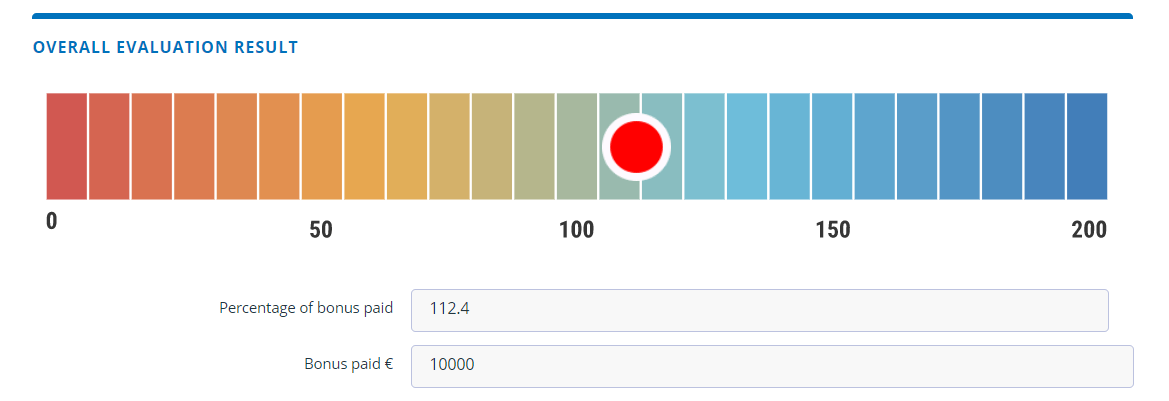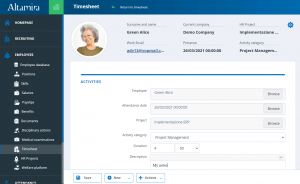Introducing a new employee evaluation system in a company is always a delicate operation. There is a risk that it will end up being “rejected” by the company’s institutional structure, with people being reluctant to see its benefits and change their usual ways.
This phenomenon can occur for all new processes that are brought into a company, such as the introduction of a new CRM, the adoption of new security policies, etc.
In the case of a new performance management system for employees, the main risk is that this might be interpreted as a threat to the status quo and an attempt to identify and punish the employees who are less productive.
In this article, we offer 10 tips for companies who plan to introduce a performance evaluation system. If you follow these suggestions, the adoption rate for the new system in your company will be higher!
1. Present it in a positive and transparent manner
When you introduce a personnel evaluation system in your company, it is essential to start on the right foot. The first thing you should do is present the project to the employees, highlighting all the positive features and dispelling any misunderstandings from the start. In particular, you should stress that the new system is not a punitive one, but a reward system which functions on merit. Furthermore, a good employee evaluation system is not one that is focused on the past, but on the future and on the improvements that the company and individual employees could make.
2. Adapt it to the corporate culture
Make sure that the parameters by which the employees will be evaluated are aligned with your company’s culture and vision. For example, for a company that views its flexibility as an important strength, it wouldn’t make much sense to start evaluating employees on their punctuality at work.
3. Educate your employees
The proper use of an evaluation system requires a certain minimum of training, both for employees and, most importantly, for the managers who will be tasked with evaluating them. One of the main limitations of some companies’ evaluation systems is the fact that their managers do not possess the skills needed to conduct credible, objective and constructive evaluations. For this reason, it is essential both to develop these soft skills on their part and to adopt evaluation systems with clear rules, which leave little room for ambiguity. In this way, you will avoid any situation in which managers are using different yardsticks in their assessments.
4. Start the process from the top
Many companies decide—in our view, correctly—to implement the new evaluation system for employees in a progressive manner, starting from the management itself. In this way, the management will set a good example for all employees, and you will also have the ability to fine-tune the processes with a smaller number of employees before applying the new system to everyone.
5. Ask for a reasonable amount of effort
One of the latest trends in performance management is the transition from an annual assessment to a more continuous feedback system. Our advice is to find the right balance between a too-infrequent process—where there is a risk that the final evaluation would be based more on the latest impressions than on what happened during the course of a year—and a too-frequent one, which would require an excessive workload, and is therefore likely to lead to high abandonment rates.
6. Set up a system of notification and reminders
Employees and managers are very busy, and there is a significant risk that they will fail to meet the deadlines of the evaluation process. When the system used to be based on paper forms, this risk would end up being a near-certainty. However, with a good performance management software you can instead set up a series of notifications that would remind all parties (e.g. via e-mail) of when it is time to play an active part in the process. Even more: you can also set up reminders for the development and training activities planned as a result of the evaluation process. In this way, both managers and employees will be reminded to actually act on what was recorded in the evaluation sheet.
7. Give a voice to the employees
The more employees are actively involved in the evaluation process, the greater their engagement and level of satisfaction will be. Accordingly, choose a system that allows for shared goal setting, self-evaluation by employees and the possibility for the latter to freely access their evaluation path at any moment. This will result in an increase in the adoption rate.
8. Integrate it with the training system and the bonus system
We have already pointed out that an effective employee evaluation system should primarily aim at the development of the employees’ skills. Put this concept front and center by integrating your performance management system with the company’s training program, automatically offering courses for employees to attend in order to improve their skills or fill any identified skill gaps. Likewise, you can link company bonuses to the results obtained during the course of evaluation.

By linking the final result of the evaluation process to the company’s incentive system, you can assign bonuses to each employee according to merit. Here’s an example from Altamira Performance.
9. Give management the right tools
For an evaluation system to be truly useful, it must provide both management and Human Resources with the right tools to make informed decisions. Accordingly, it is essential to have a reporting system that would provide accurate and well-organized information regarding the skills matrix of the company.
10. Adopt a flexible system
It would be a serious error to apply a single evaluation criterion for all employees, especially in a medium or large company. For some of them, it might make more sense to evaluate their skills alone; for others, goals could be set up as exclusively quantitative rather than qualitative, etc. Accordingly, the evaluation system you choose to adopt should be customizable based on each employee’s role within the company, or on other factors that you can set up.
Copyright: ©nd3000/Fotolia.




























































































